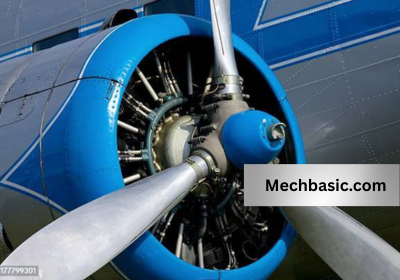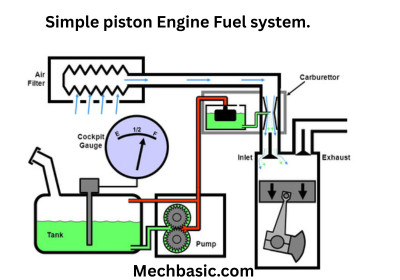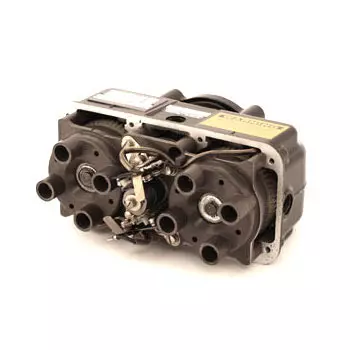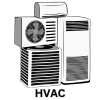let’s dive into it — here’s a detailed overview of piston engine aircraft:
In this article:
What Is a Piston Engine Aircraft?
A piston engine aircraft (also called a reciprocating engine aircraft) uses an internal combustion engine where pistons move up and down inside cylinders to turn a crankshaft, which ultimately spins a propeller to generate thrust.
Think of it as similar to a car engine, but adapted for aviation purposes.
Main Components of a Piston Engine Aircraft:
1. Piston Engine:
- Cylinders: Where combustion happens. Common configurations are inline, flat (horizontally opposed), and radial.
- Pistons: Move up and down as air-fuel mixture burns.
- Crankshaft: Converts piston’s up-down motion into rotational motion.
- Spark plugs: Ignite the fuel-air mixture.
- Carburetor or fuel injection system: Mixes fuel with air.
2. Propeller:

- Directly attached to the engine.
- Converts the engine’s rotational power into thrust.
- Can be fixed-pitch (simple) or variable-pitch/constant-speed (more efficient at different speeds).
3. Fuel System:

- Delivers aviation gasoline (avgas) to the engine.
- Includes fuel tanks, pumps, lines, and filters.
4. Ignition System:

- Typically dual magnetos for redundancy.
- Generates electricity for the spark plugs independent of the main electrical system.
Cooling System:
- Air-cooled: Most common — uses airflow over the engine.
- Liquid-cooled: Less common, uses coolant like a car radiator.
Lubrication System:
- Circulates oil to reduce friction and carry away heat.
Electrical System:
- Powers avionics, lights, starter motor, etc.
- Includes alternator/generator, battery, and electrical buses.
How the Piston Engine Works (4-Stroke Cycle)?
- Intake Stroke:
- Intake valve opens, piston moves down, air-fuel mixture is drawn in.
- Compression Stroke:
- Intake valve closes, piston moves up, compressing the mixture.
- Power Stroke:
- Spark plug ignites the mixture, rapid combustion pushes the piston down.
- Exhaust Stroke:
- Exhaust valve opens, piston moves up, expels exhaust gases.
This cycle happens extremely fast — thousands of times per minute.
Piston Engine aircraft animation
Types of Piston Engines in Aircraft:
| Type | Description | Example |
|---|---|---|
| Inline | Cylinders in a straight line. | Older fighters (e.g., P-51 Mustang) |
| Flat (Horizontally Opposed) | Cylinders lie flat in two opposing rows. | Most general aviation aircraft (e.g., Cessna 172) |
| Radial | Cylinders arranged in a circle around the crankshaft. | WWII aircraft (e.g., F4U Corsair) |
Advantages of Piston Engine Aircraft:
- Lower cost to operate and maintain than jets.
- Great for short flights and training.
- Simpler mechanics compared to turbine engines.
- Can operate from smaller airports.
Limitations:
- Lower speeds and altitudes compared to jets.
- More sensitive to weather (especially carburetor icing).
- Performance drops at high altitudes unless turbocharged.
- Limited by mechanical reliability compared to modern turbine engines.
Typical Examples of Piston Engine Aircraft
- Cessna 172 — Very popular training and personal aircraft.
- Piper PA-28 Cherokee — Another popular trainer.
- Beechcraft Bonanza — More luxurious piston aircraft.
- Diamond DA40 — Modern composite aircraft with piston engines.
- Extra 300 — High-performance aerobatic aircraft.
FAQ Section:
What is a piston engine aircraft?
A piston engine aircraft uses an internal combustion engine with pistons to turn a propeller and generate thrust.
What fuel do piston engine aircraft use?
Most use aviation gasoline (avgas), specifically 100LL (low-lead), although some modern engines can use automotive fuel (mogas) or diesel.
How does a piston engine work?
It follows a four-stroke cycle: intake, compression, combustion (power), and exhaust.
What is the most common piston engine aircraft?
The Cessna 172 is the world’s most produced and popular piston aircraft.
What’s the typical cruising speed of a piston aircraft?
Around 100–200 knots (115–230 mph), depending on the model.
How high can piston engine planes fly?
Normally up to 12,000–15,000 feet; turbocharged piston engines can reach up to 25,000 feet.
What are the main types of piston engine layouts?
Inline, flat (horizontally opposed), and radial engines.
What’s the difference between carbureted and fuel-injected piston engines?
Carbureted engines mix air and fuel in a carburetor; fuel-injected engines inject fuel directly into the intake manifold or cylinder, improving performance and avoiding carburetor icing.
What causes carburetor icing?
Moist air cooling inside the carburetor can freeze, restricting airflow and causing engine failure if not corrected.
How are piston engines cooled?
Mostly air-cooled by airflow around the engine; some rare types are liquid-cooled.
How many cylinders do piston aircraft engines usually have?
Typically 4 to 6 cylinders, though some high-performance ones have 8 or 9.
What is a magneto in an aircraft engine?
A self-contained ignition device that generates electrical sparks for spark plugs, independent of the aircraft’s battery.
Why do piston aircraft have two magnetos?
For redundancy — if one fails, the engine keeps running on the other — and to improve combustion efficiency.
What is a constant-speed propeller?
A propeller that automatically adjusts its blade angle to maintain optimal engine RPM.
What is engine “detonation” and why is it bad?
Uncontrolled combustion causing shock waves inside the cylinder, leading to engine damage.
What happens if a piston engine fails in flight?
The aircraft becomes a glider — pilots practice emergency procedures to land safely.
How often must piston aircraft engines be overhauled?
Typically every 1,800–2,000 hours of operation or 12 years, whichever comes first (known as TBO — Time Between Overhaul).
Can piston aircraft be flown on long trips?
Yes, many are capable of trips of 500–1,000 miles with proper planning and fuel stops.
How is the engine started?
Using a starter motor powered by the battery, turning the engine until it fires.
Are piston engine aircraft expensive to maintain?
Maintenance is relatively affordable compared to jets but includes regular inspections, oil changes, and occasional expensive engine work.
Conclusion:
Some piston engines are turbocharged to maintain power at higher altitudes (like a car’s turbo). Others can even be supercharged.
Other courses:



